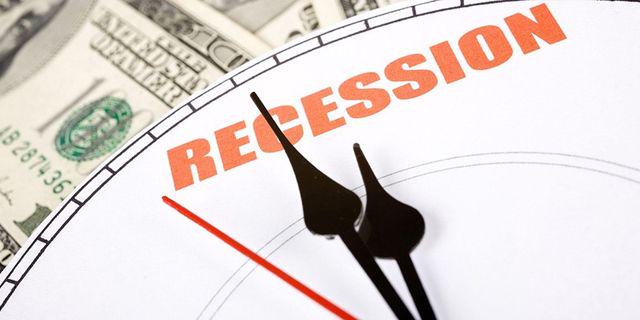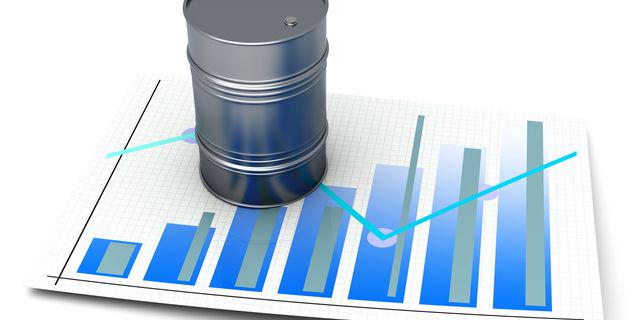
Wenn die Inflation 4 % übersteigt und die Arbeitslosigkeit unter 5 % fällt, tritt die US-Wirtschaft innerhalb von zwei Jahren in eine Rezession ein.

Verschwenden Sie nicht Ihre Zeit - beobachten Sie, wie die NFP den US-Dollar beeinflusst!
Hinweis zur Datenerfassung
Wir speichern Ihre Daten für den Betrieb dieser Website. Durch Drücken der Taste stimmen Sie unserer Datenschutzpolitik zu.

Forex-Buch für Anfänger
Ihr Leitfaden durch die Welt des Handels.
Überprüfen Sie Ihre Inbox!
In unserer E-Mail finden Sie das Buch Forex 101. Tippen Sie einfach auf die Schaltfläche, um es zu erhalten!
Risikowarnung: ᏟᖴᎠs sind komplexe Instrumente und bringen ein hohes Risiko mit sich, aufgrund von Hebelwirkung schnell Geld zu verlieren.
71,43 % der Privatanleger-Konten verlieren Geld, wenn sie mit diesem Anbieter ᏟᖴᎠs handeln.
Sie sollten sich überlegen, ob Sie verstehen, wie ᏟᖴᎠs funktionieren und ob Sie es sich leisten können, zu riskieren, Ihr Geld zu verlieren.
2022-10-12 • Aktualisiert
Informationen sind keine Investitionsberatung
Bullen zerfleischen ihre Gegner und heben sie dann auf ihre Hörner. Investoren, die "Bullen" genannt werden, verhalten sich ähnlich: Sie verdienen Geld mit steigenden Vermögenspreisen. Daher wird eine Marktphase, in der sich die meisten Anleger so verhalten, als "Bullenmarkt" bezeichnet. Während eines Bullenmarktes ist die Nachfrage nach Vermögenswerten hoch, jeder will etwas kaufen, und die Preise steigen. Irgendwann beginnen die Anleger zu glauben, dass dies ewig so weitergehen wird. Dann kommt es zu einer selbsterfüllenden Prophezeiung: Der Wert von Vermögenswerten steigt weiter, und zwar nicht wegen des wirtschaftlichen Erfolgs, sondern wegen des Glaubens der Anleger an weiteres Wachstum.
Seit dem Zweiten Weltkrieg hat es in den Vereinigten Staaten 12 solcher Phasen gegeben. Die letzte findet gerade statt – ein großer Teil der Weltwirtschaft ist seit der Finanzkrise 2007-2009 stark gewachsen. Und selbst die Coronavirus-Pandemie hat diesem Bullenmarkt, dem längsten in der Geschichte, keinen Abbruch getan.
Ein Bärenmarkt ist ein Zeitraum, in dem die Kurse von Vermögenswerten über einen längeren Zeitraum hinweg fallen. Es ist kein Zufall, dass Bären im Namen vorkommen: Diese Tiere schlagen das Opfer nieder und zerreißen es während des Angriffs. "Bären" sind Anleger, die mit fallenden Kursen Geld verdienen.
Es gibt keine eindeutige Bestimmung, um wie viel der Wert von Vermögenswerten sinken muss, damit ein Bärenmarkt beginnt. In der Regel glauben die Anleger an einen Bärenmarkt, wenn die Kurse um mindestens 20 % gegenüber den nächsten Höchstständen fallen und dieser Prozess länger als zwei Monate anhält.
Leider sind Krisen im Wirtschaftskreislauf unvermeidlich. Es gibt keinen allgemeingültigen Grund für die Ereignisse. Es kann sich um Markt-"Blasen", politische und militärische Probleme, eine Verlangsamung des Wirtschaftswachstums usw. handeln. Der Absturz wird in der Regel durch die Anleger selbst verschärft, die zunächst bis zuletzt an den Erfolg glauben und dann in Panik geraten. Infolgedessen werden Vermögenswerte verkauft, die Volatilität steigt sprunghaft an, und die Preise fallen.
Kapitalfluss
In einem Bullenmarkt fließt das Kapital von sicheren zu risikoreichen Anlagen, da Händler und Anleger ihr Vermögen vermehren. Umgekehrt versuchen die Anleger, ihr Kapital in Zeiten von Bärenmärkten zu schützen. Infolgedessen verlassen sie risikoreiche Anlagen und transferieren ihre Mittel in sichere Anlagen.
Zinssätze
Niedrige Zinssätze gehen in der Regel mit Bullenmärkten einher. Dies geschieht, weil niedrige Leitzinsen Kredite für Unternehmen und Kleinanleger günstiger machen. Infolgedessen kann ein Unternehmen wachsen, und Kleinanleger können Aktien von Unternehmen kaufen und die Preise noch weiter in die Höhe treiben.
BIP-Entwicklung
Hohe BIP-Wachstumsraten gehen in der Regel mit Bullenmärkten einher, während Bärenmärkte mit niedrigen Wachstumsraten korrelieren. Die BIP-Wachstumsraten beschleunigen sich, wenn die Leistungen der Unternehmen steigen und die Arbeitnehmer höhere Gehälter erhalten, was die Konsumausgaben erhöht.
Im Gegenteil: Wenn die Verbraucherausgaben sinken, erzielen die Unternehmen weniger Einnahmen, die Anleger verkaufen Aktien und der Aktienmarkt gerät ins Wanken.
Unter Anlegern gibt es eine gängige Redewendung: "In einem wachsenden Markt ist jeder ein Genie." Das stimmt zum Teil, denn es ist einfach, zu profitieren, wenn die meisten Vermögenswerte wachsen. Allerdings gibt es einen Wettbewerb um die Größe, um 10 % oder 30 % pro Jahr zu verdienen.
Vergessen Sie jedoch nicht die Volatilität. Die Märkte können schwanken, und es ist schwer zu erraten, wo der Tiefpunkt des Preises lag und wann der Höchststand erreicht sein wird. Händler können Risiken eingehen und versuchen, den Jackpot zu knacken, oder sie können langsam verdienen. Je nach dem Grad der Erhöhung der Risikobereitschaft und der Profitabilität gibt es ein paar Strategien
Kaufen und halten
Es handelt sich um eine klassische und für den Durchschnittsmenschen leicht zugängliche Strategie. Die Bedeutung ist wortwörtlich: Analysen lesen, Indikatoren betrachten, solide und stabile Unternehmen auswählen, ihre Aktien kaufen und sie im Portfolio behalten, bis es ein Ziel erreicht, egal was später auf den Märkten passiert.
Diese Variante eignet sich besonders für Anleger, die nicht bald Gewinne mitnehmen oder nur von Investitionen leben wollen. Die Strategie funktioniert gut für die Zukunft, insbesondere für Jahrzehnte.
Einer der erfolgreichsten Investoren der Welt, Warren Buffett, kaufte beispielsweise 1988 Coca-Cola-Aktien und hält sie noch immer. In 33 Jahren brachte die Anlage einen Gewinn von 1553 % (ohne Dividenden).
Korrekturen kaufen
Ganz gleich, wie stark der Markt nach oben drängt, Korrekturen sind unvermeidlich. Eine Korrektur ist ein kurzer Zeitraum, in dem die Preise von Vermögenswerten um einige Prozent und manchmal um 15-20 % fallen. Normalerweise erholen sich die Preise schnell wieder, aber manche Anleger warten und kaufen genau in solchen Momenten Vermögenswerte, weil die Rendite dann noch höher ist.
Eine Hebelwirkung benutzen
Händler, professionelle Teilnehmer am Aktienmarkt, verwenden diese Strategie. Dabei geht es darum, nicht nur eigenes Geld zu investieren, sondern auch Geld von einem Broker zu leihen. Dies ist eine riskante Methode. Ein Händler kann mit einem 10-15%igen Anstieg der Aktien rechnen, und sie werden nur um 2 % wachsen. Es ist immer noch ein profitables Geschäft, aber mit einem schlechten Risiko-Ertrags-Verhältnis. Es wäre einfacher, das gleiche Ergebnis mit dem Kauf von Anleihen zu erzielen.
Nicht in Panik geraten und keine Vermögenswerte verkaufen
Der "Bärenmarkt" ist nicht ewig, eines Tages wird die Wirtschaft wieder wachsen, und die Vermögenswerte werden ihren Wert zurückerhalten. Daher ist es besser, gute Investitionen nicht für fast nichts zu verkaufen.
Verluste in Diagrammen und Brokerage-Anwendungen sind "Papier", nicht real. Tatsächliche Verluste treten erst auf, wenn der Anleger den Vermögenswert verkauft und weniger Geld auf dem Konto hat, als er investiert hat. Davor gibt es keine Verluste
Außerdem kann ein Ausverkauf den Markt lange Zeit nach unten ziehen. So erreichten die Indizes während der Krise 2008 ihren Tiefststand erst am 9. März 2009, also mehr als ein Jahr nach Beginn der Rezession. Folgen Sie also nicht anderen ängstlichen Anlegern und verkaufen Sie nicht übereilt Vermögenswerte.
Tun Sie so, als ob ein Verkauf stattfände
Zusätzliche Gewinne im "Bärenmarkt" sind durchaus möglich. Deshalb müssen Sie Ihre Anlagen sorgfältig auswählen. Wenn der Anleger weiß, was er will, vielversprechende Unternehmen sieht und Gewinne nicht heute, sondern in der Zukunft erwartet, dann ist ein Bärenmarkt ein Geschenk. Es ist eine Chance, billiger in Unternehmen mit hohem Potenzial zu investieren. Es ist kein Zufall, dass Warren Buffett riet: "Sei ängstlich, wenn andere gierig sind, und gierig, wenn andere ängstlich sind."
Gleichzeitig ist es nicht notwendig, die Talsohle des "Bärenmarktes" abzuwarten, denn niemand weiß, wann diese erreicht sein wird.
Es ist besser, nicht zu raten, sondern eine Technik zur Positionsbestimmung zu wählen. Investieren Sie ungeachtet des Kurses in Unternehmen, die für Ihre Ziele geeignet sind. Das ist zwar nicht so profitabel wie das Raten von Tiefst- und Höchstkursen, aber realistischer.
Sowohl bullische als auch bärische Märkte bieten Händlern ein breites Spektrum an Möglichkeiten. Um sie jedoch richtig zu nutzen, müssen Händler genau wissen, in welchem Markt sie handeln.
"Nun, dies ist ein Bullenmarkt, wissen Sie" - Edwin Lefèvre, "Erinnerungen eines Börsianers".
Dieses Zitat stammt aus einem der beliebtesten Bücher über den Aktienhandel. Es bedeutet, dass Händler dem globalen Trend folgen und in einem Bullenmarkt nach Long-Positionen und in einem Bärenmarkt nach Short-Positionen Ausschau halten sollten.
Langfristig orientierte Anleger hingegen bauen Positionen in einem Bärenmarkt auf und nehmen in einem Bullenmarkt Gewinne mit, wenn die Kurse nahe an ihren Höchstständen sind.
Mehrere Instrumente können den Händlern helfen, den Trend zu bestimmen. Eines der bekanntesten von ihnen ist der RSI-Oszillator.
Glücklicherweise können FBS-Händler unabhängig vom Marktverhalten Geschäfte auf beiden Seiten eröffnen.

Wenn die Inflation 4 % übersteigt und die Arbeitslosigkeit unter 5 % fällt, tritt die US-Wirtschaft innerhalb von zwei Jahren in eine Rezession ein.

Die Ölmärkte standen angesichts der gestiegenen Nachfrage und des sinkenden Angebots unter großem Druck. Die OPEC+ ist nicht in der Lage oder nicht willens, ihre selbst gesteckten Produktionsziele zu erreichen, und beharrt trotz steigender Preise auf einer Begrenzung der Produktionssteigerung um 400 000 Barrel pro Tag.

Immer mehr Analysten sind sich sicher, dass Brent-Öl die Marke von $100 pro Barrel überschreiten wird. Wie stark wird der Ölpreis die Märkte bewegen, und in welche Richtung wird die Bewegung gehen? Finden wir es heraus!
Ihr Antrag wird akzeptiert.
Wir werden Sie in dem von Ihnen gewählten Zeitintervall anrufen
Nächste Rückrufwunsch für diese Telefonnummer wird verfügbar in 00:30:00
Wenn Sie ein dringendes Problem haben, kontaktieren Sie uns bitte per
Live-Chat
Interner Fehler. Bitte versuchen Sie später noch einmal